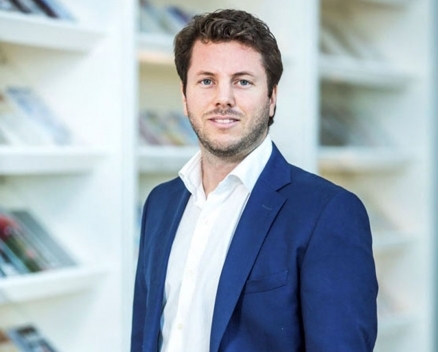
TRADITIONAL ARABIC ARCHITECTURE TO PAVE WAY FOR FUTURE OF BUILDING SUSTAINABILITY
Sustainability and construction experts have said that a new approach to traditional architecture designs, intelligent products, climate-tailored building designs, and 3D technology are optimal solutions for tackling the UAE’s cooling bill.
The carbon footprint of the Emirates will be one of the core topics discussed at the upcoming Middle East Façades Summit, taking place on the first day of Windows, Doors and Façades Event, which runs from 18-20 September at the Dubai World Trade Centre (DWTC).
Scott Coombes, the Summit’s Chair and Director at AESG, a local company specialising in the reduction of the ecological footprint of the built environment, believes that the most effective way of ensuring building sustainability is by combining traditional Islamic and Arabic architecture with innovative tech solutions tailored to UAE’s sub-tropical climate.
He said: “Cooling buildings in a climate where outdoor summer temperatures often exceed 45 degrees Celsius is very energy-consuming work and since air conditioning typically accounts for around 60-70% of a building’s total annual energy use, we should be avoiding large curtain walled facades in favor of more traditional envelopes with smaller windows and good shading devices.”
Located in the Bastakiya and Shindagah area of Dubai, traditional flagship examples of climate-orientated constructions feature several wind towers, which passively cool the building in hot summer months with thick external walls offering good thermal mass and small windows, shaded with mashrabiyas to prevent excessive solar gain into the building.
Coombes added: “We have to look back to take a step forward and we already have several projects featuring a modern take on high performance envelopes and effectively keeping buildings cool from the harsh external conditions. Some of our projects that have adopted such techniques include a number of the buildings in Masdar City such as the IRENA Headquarters. I expect the growth of 3D printing technologies will introduce some great new ways to create innovative shading structures on façades and mashrabiyas.”
Minimising sun exposure is a particularly pressing issue in high-rise buildings, where extensive solar insolation combined with soaring temperatures, humidity levels and extensive usage of glazed façades cause greenhouse effect, resulting in higher energy consumption in comparison to the rest of the world.
Coombes added: “I think there is a common misconception that cost is an issue that results in compromises in sustainability – I strongly disagree with this because a good effective sustainable design should result in less materials and improved construction processes.”
Speaking ahead of his participation in the panel discussion themed ‘Sustainability and Energy Efficiency – Advancing Green Building Principles,’ Sarfraz Dairkee, General Manager- Corporate Development & Engineering, MAHY Khoory & Co; Secretary of the Board of Directors, Emirates Green Building Council, said he also believes that adapting traditional architecture solutions is the way forward for the UAE.
“Harmony with the environment makes buildings sustainable and we have to adapt modern construction materials, technologies, and tools to the local conditions. Closer understanding of variations in sunlight, temperature, humidity and wind exposure along with creative utilisation of energy modeling tools have the potential to reduce the carbon footprint of buildings significantly. We need a shift in the mindset from controlling to coordinating to achieve it,” he said.
“Every building is unique and to get the best out of it in terms of comfort and environmental footprint we have to do research and understand the local conditions as adapting those to the building façade design delivers astounding results. Modern technology provides tools and technologies to customize and adapt buildings to the challenges posed by the UAE’s desert environment.”
The Summit will feature seven distinctive sessions focusing on innovation, efficiency, security and quality control in façade design and engineering, the latest updates to fire and safety codes, building acoustic design optimisation as well as 12 CPD certified workshops and case studies.
Other prominent speakers at the Summit will include:
- Dr. Joerg Westphal, Executive Senior Vice President, Schüco International KG
- Christopher Seymour, Regional Development Director & Head of Markets (MESA), Mott MacDonald
- Andy Dean, Head of Facades – Middle East, WSP Parsons Brinckerhoff
- Abdulmajid Karanouh, Director, Head of Design Innovation, Facades & Sustainability, Ramboll
- Michael James Kelly, Director of Fire Safety and Operations, Emaar Malls Group.
Windows, Doors and Façades Event, organised by dmg events Middle East, Asia and Africa, the organiser of The Big 5, has been created to meet the growing demands of the GCC’s US$10billion construction market, amidst rising building development activities in the Middle East region.
Running from 18-20 September at the new Za’abeel Halls 4 & 5, Dubai World Trade Centre; the event will be positioned as the central meeting place for global manufacturers and distributors of windows, doors and façades products to network and develop business leads with more than 5,000 buyers of construction products.


























